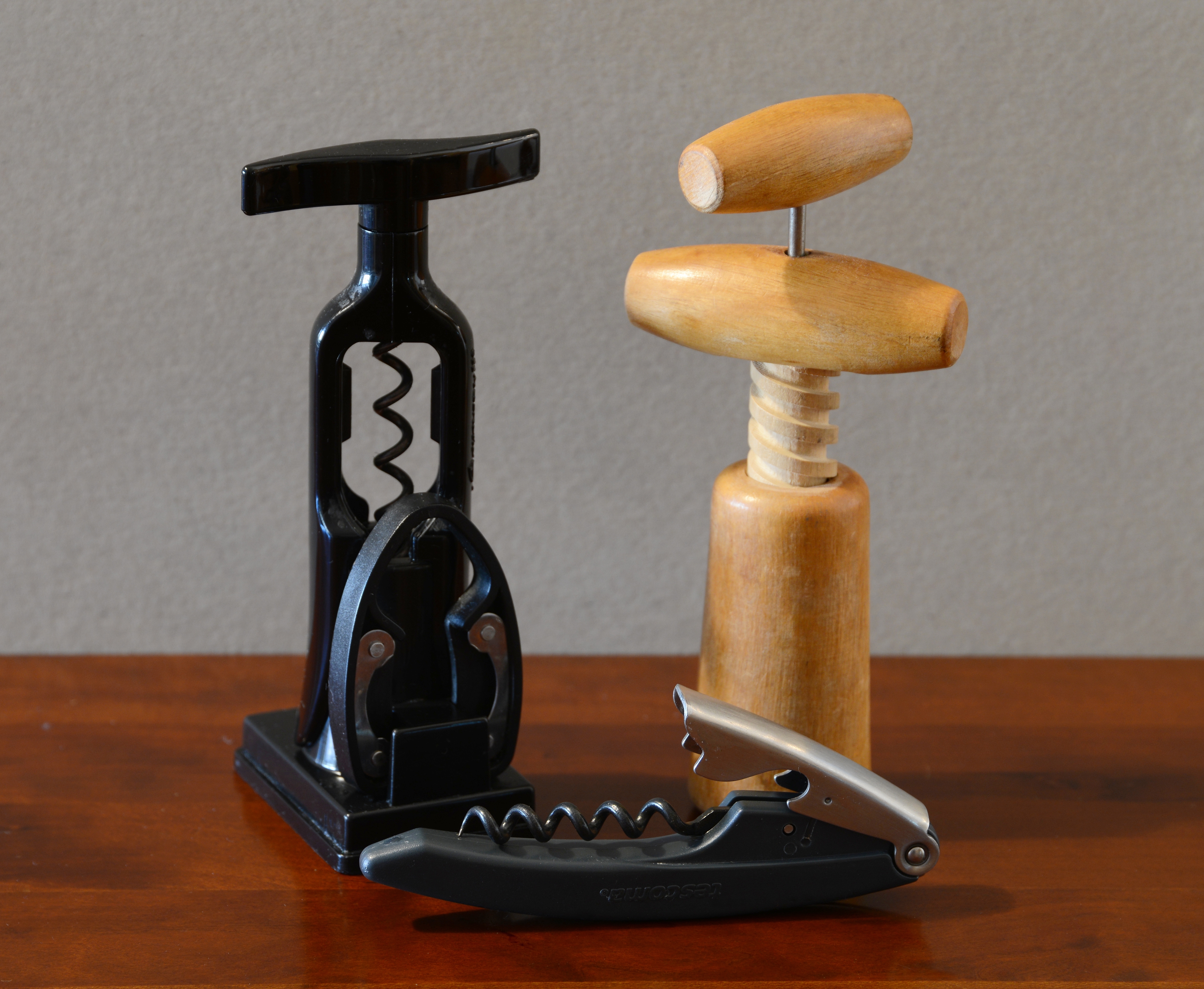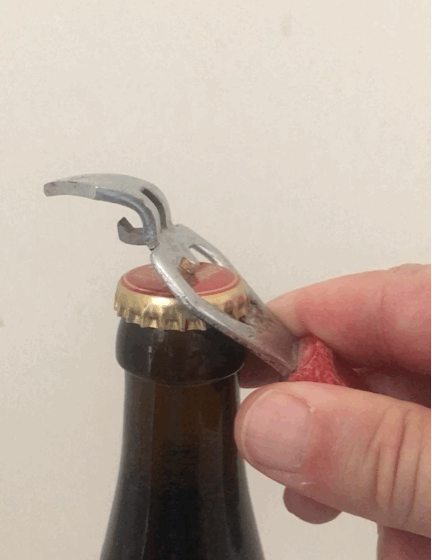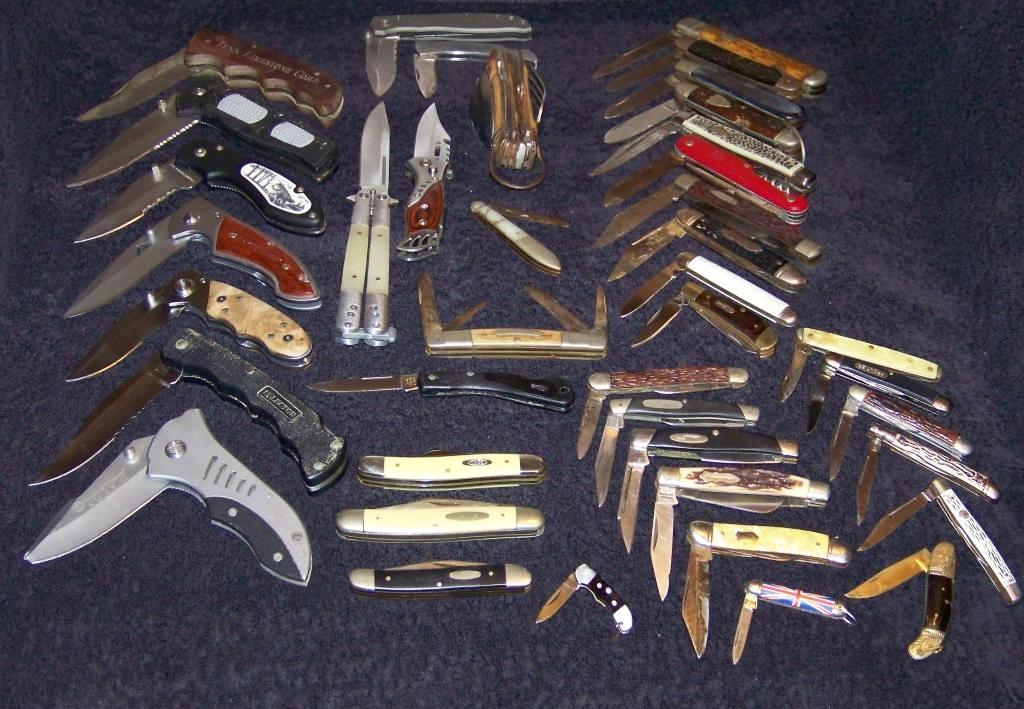|
Corkscrew
A corkscrew is a tool for drawing corks from wine bottles and other household bottles that may be sealed with corks. In its traditional form, a corkscrew simply consists of a pointed metallic helix (often called the "worm") attached to a handle, which the user screws into the cork and pulls to extract it. Corkscrews are necessary because corks themselves, being small and smooth, are difficult to grip and remove, particularly when inserted fully into an inflexible glass bottle. More recent styles of corkscrew incorporate various systems of levers that further increase the amount of force that can be applied outwards upon the cork, making easier the extraction of difficult corks. History Its design may have derived from the gun worm which was a device used by men to remove unspent charges from a musket's barrel in a similar fashion, from at least the early 1630s.winepros.com.au. The corkscrew is possibly an English invention, due to the tradition of beer and cider, and ''Treat ... [...More Info...] [...Related Items...] OR: [Wikipedia] [Google] [Baidu] |
Samuel Henshall
Samuel Henshall (1764 or 1765 – 17 November 1807) was an English clergyman and writer, and inventor of a type of corkscrew. Life Henshall was born in 1764 or 1765, son of George Henshall, a grocer of Sandbach, Cheshire, and was educated at Manchester Grammar School. He went on to Brasenose College, Oxford, matriculating in October 1782, and subsequently became one of Hulme's exhibitioners. His tutor was Thomas Braithweite, an old Manchester schoolboy, whom he mentions gratefully in his "Etymological Organic Reasoner", p. 8. He graduated B.A. in June 1786, M.A. in May 1789, and after taking holy orders was elected a fellow of the college. In December 1792, being then curate of Christ Church, Spitalfields, he was an unsuccessful candidate for the lectureship of St Peter the Poor, and preached a probationary sermon, afterwards published. In November 1800 he stood, again without success, for the Anglo-Saxon professorship at Oxford against Thomas Hardcastle (''The Gentleman's ... [...More Info...] [...Related Items...] OR: [Wikipedia] [Google] [Baidu] |
Bottle Opener
A bottle opener is a device that enables the removal of metal bottle caps from glass bottles. More generally, it might be thought to include corkscrews used to remove cork or plastic stoppers from wine bottles. A metal bottle cap is affixed to the rim of the neck of a bottle by being pleated or ruffled around the rim. A bottle opener is a specialized lever inserted beneath the pleated metalwork, which uses a point on the bottle cap as a fulcrum on which to pivot. Varieties There are several distinct designs of such bottle openers. Wall mounted openers are typically found behind bars in pubs, whilst hand-tool bottle openers tend to be found and used in domestic environments. The functional elements of bottle openers (a tooth or lip to catch the underside of the cap, a fulcrum across which to exert the force that will remove the cap, and usually a lever for mechanical advantage) tend to be consistent, although they can vary in design and aesthetics. Crown cork opener Inven ... [...More Info...] [...Related Items...] OR: [Wikipedia] [Google] [Baidu] |
Wine Accessories
Wine accessories are things that may be used in the storage or serving of wine. Wine accessories include many items such as wine glasses, corkscrews, and wine racks. Glasses Wine glasses are a type of glass stemware that are used to drink and taste wine from. Selection of a particular wine glass for a wine style is important, as the glass shape can influence its perception. Bottle openers Wine bottle openers are required to open wine bottles that are stoppered with a cork. They are slowly being supplanted by the screwcap closure. There are many different inceptions of the wine bottle opener ranging from the simple corkscrew, the screwpull lever, to complicated carbon dioxide driven openers. The most popular is the wine key, sommelier knife or "waiter's friend" which resembles a pocket knife and has a small blade for cutting foil and a screw with a bottle brace. Wine poppers are another means of opening wine. A hollow spike is driven through the cork of a bottle. A cartri ... [...More Info...] [...Related Items...] OR: [Wikipedia] [Google] [Baidu] |
English Inventions
English inventions and discoveries are objects, processes or techniques invented, innovated or discovered, partially or entirely, in England by a person from England. Often, things discovered for the first time are also called inventions and in many cases, there is no clear line between the two. Nonetheless, science and technology in England continued to develop rapidly in absolute terms. Furthermore, according to a Japanese research firm, over 40% of the world's inventions and discoveries were made in the UK, followed by France with 24% of the world's inventions and discoveries made in France and followed by the US with 20%. The following is a list of inventions, innovations or discoveries known or generally recognised to be English. Agriculture * 1627: Publication of first experiments in Water desalination and filtration by Sir Francis Bacon (1561–1626). * 1701: Seed drill improved by Jethro Tull (1674–1741). *18th century: of the horse-drawn hoe and scarifier by ... [...More Info...] [...Related Items...] OR: [Wikipedia] [Google] [Baidu] |
Helix
A helix () is a shape like a corkscrew or spiral staircase. It is a type of smooth space curve with tangent lines at a constant angle to a fixed axis. Helices are important in biology, as the DNA molecule is formed as two intertwined helices, and many proteins have helical substructures, known as alpha helices. The word ''helix'' comes from the Greek word ''ἕλιξ'', "twisted, curved". A "filled-in" helix – for example, a "spiral" (helical) ramp – is a surface called '' helicoid''. Properties and types The ''pitch'' of a helix is the height of one complete helix turn Turn may refer to: Arts and entertainment Dance and sports * Turn (dance and gymnastics), rotation of the body * Turn (swimming), reversing direction at the end of a pool * Turn (professional wrestling), a transition between face and heel * Turn, ..., measured parallel to the axis of the helix. A double helix consists of two (typically congruent) helices with the same axis, differing by a tran ... [...More Info...] [...Related Items...] OR: [Wikipedia] [Google] [Baidu] |
Herbert Allen (inventor)
Herbert Allen (1907-1990) was an American inventor. Allen was born May 2, 1907. He graduated from Rice University William Marsh Rice University (Rice University) is a private research university in Houston, Texas. It is on a 300-acre campus near the Houston Museum District and adjacent to the Texas Medical Center. Rice is ranked among the top universit ... in 1929. Herbert Allen invented the Screwpull brand of corkscrews in 1979. Herbert Allen was issued 13 patents out of 13 filed patents. His earliest patent was on May 8, 1978. His last filing was on August, 24th 1988. He died June 12, 1990 in Houston, Texas. References 1990 deaths 1907 births Rice University alumni 20th-century American engineers 20th-century American inventors {{US-inventor-stub ... [...More Info...] [...Related Items...] OR: [Wikipedia] [Google] [Baidu] |
Musket
A musket is a muzzle-loaded long gun that appeared as a smoothbore weapon in the early 16th century, at first as a heavier variant of the arquebus, capable of penetrating plate armour. By the mid-16th century, this type of musket gradually disappeared as the use of heavy armour declined, but ''musket'' continued as the generic term for smoothbore long guns until the mid- 19th century. In turn, this style of musket was retired in the 19th century when rifled muskets (simply called rifles in modern terminology) using the Minié ball (invented by Claude-Étienne Minié in 1849) became common. The development of breech-loading firearms using self-contained cartridges (introduced by Casimir Lefaucheux in 1835) and the first reliable repeating rifles produced by Winchester Repeating Arms Company in 1860 also led to their demise. By the time that repeating rifles became common, they were known as simply "rifles", ending the era of the musket. Etymology According to the ... [...More Info...] [...Related Items...] OR: [Wikipedia] [Google] [Baidu] |
Pocket Knife
A pocketknife is a knife with one or more blades that fold into the handle. They are also known as jackknives (jack-knife), folding knives, or may be referred to as a penknife, though a penknife may also be a specific kind of pocketknife. A typical blade length is . Pocketknives are versatile tools, and may be used for anything from whittling and Wood carving, woodcarving, to butchering Game (hunting), small game, gutting and filleting small fish, aiding in the preparation of tinder and kindling for fires, boring holes in soft material, to opening an envelope, cutting twine, slicing a piece of fruit or as a means of self-defense. Specialised designs are also used for mushroom hunting and gardening. Pocketknives designed for gardening include pruning knives, which are folding knives with long curved blades used for pruning, trimming cuttings, taking buds and preparing material for grafting. History The earliest known pocketknives date to at least the early Iron Age. A poc ... [...More Info...] [...Related Items...] OR: [Wikipedia] [Google] [Baidu] |



.jpg)

